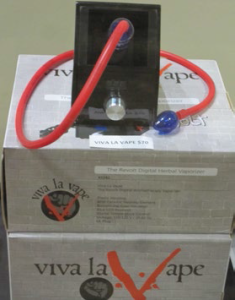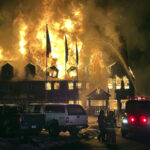In Washington – which permits the sale and personal use of cannabis and cannabis-related products through Initiative 502 passed in 2012 – the recreational marijuana industry is regulated by the Washington State Liquor Control Board. Licensees are required to have commercial general liability insurance coverage with a minimum limit of $1 million that names the Liquor Control Board as an additional insured. The coverage must be placed with an insurer rated “A-“or better.
Andrew Olive, an agent with Hub International Northwest in Bellingham, Wash., said he works with four or five carriers that are willing to provide coverage for 502 operations. Both CGL and property coverage are available, he said, but pricing is in a state of flux.
Olive said the amount and types of coverage the 502 businesses he’s worked with range from the state-required CGL minimum to much more robust coverage. Some of these proprietors own their buildings, some lease, some have different types of operations, Olive said. Some are simply growing the product, and some are growing and processing it. Some are making baked goods and other products. Some carriers, but not all, offer property coverage for the marijuana product itself and crop insurance is available through the private market for those producers who wish to buy it.
From an insurance standpoint, the 502 business is similar to any other type of manufacturing or food products industry. “We have to make sure that there’s product liability for everything that they’re doing,” Olive said.
Pricing varies dramatically, he said. Premiums are running anywhere from $5,000 to $50,000 and carriers are rapidly changing their price structures.
“They’re becoming very uncompetitive fast I’ve noticed. A lot of them wanted to get in low … and now they’re either non-renewing things or their price has gone up so much that it’s not advantageous to place the business with them,” Olive said.
Part of the problem is that a lot of newly licensed operators seek quotes for budgetary purposes to see what the pricing is like. “Then they’re not binding coverage for three to six months after that. By that time the quote has expired. I just had one that I wrote last week that had gone up significantly, about 30 percent, just based on [the carrier] re-running their numbers and current loss history that they didn’t have before among other similar operations,” Olive said.
 One coverage area increasingly in demand is directors and officers insurance, he said.
One coverage area increasingly in demand is directors and officers insurance, he said.
Because bank loans for the 502 businesses are virtually non-existent, many of the operations involve multiple investors.
“You’ve got five or six, sometimes up to 10 investors all on the board. They’re looking for some D&O coverage, as well, and we have a market for that too,” Olive said.
With the exception of the required additional insured coverage for the state LCB, there’s no consistent trend as to whether or not the various 502 companies name their production/supply chain partners as additional insureds.
“They could do it,” Olive said. “It’s such a wild west kind of area right now that I think when things shake out a little bit you’ll get more of that.”
Topics Cannabis
Was this article valuable?
Here are more articles you may enjoy.


 OpenAI Warns New Models Pose ‘High’ Cybersecurity Risk
OpenAI Warns New Models Pose ‘High’ Cybersecurity Risk  Owner of Historic Minnesota Resort Charged With Arson, Insurance Fraud
Owner of Historic Minnesota Resort Charged With Arson, Insurance Fraud  Zillow Deleting Home Climate Risk Scores Reveals Limits of Flood, Fire Data
Zillow Deleting Home Climate Risk Scores Reveals Limits of Flood, Fire Data  Florida Jury Returns $779M Verdict for Family of Security Guard Killed at Gambling Cafe
Florida Jury Returns $779M Verdict for Family of Security Guard Killed at Gambling Cafe 


